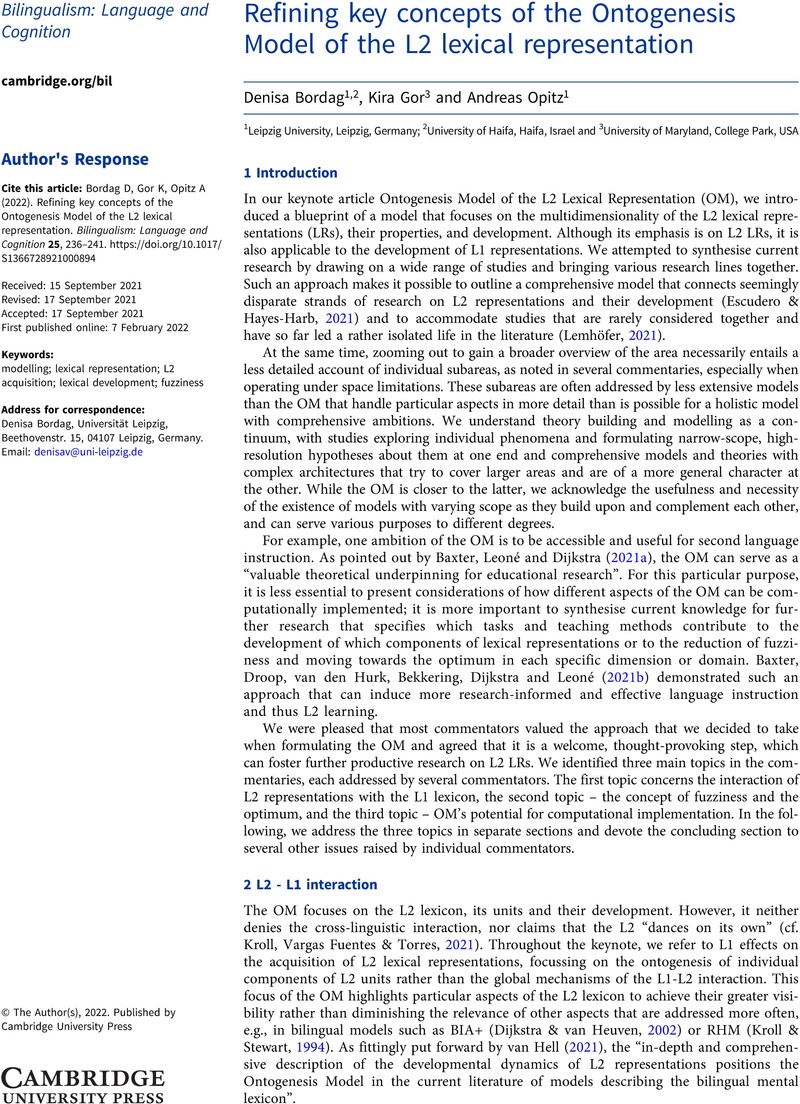Crossref Citations
This article has been cited by the following publications. This list is generated based on data provided by Crossref.
Opitz, Andreas
Bordag, Denisa
and
Furgoni, Alberto
2024.
Morphosyntactic underspecification affects the processing of verbal forms at different levels of abstraction in L1 and L2 German.
Bilingualism: Language and Cognition,
p.
1.






